 Image 1 of 9
Image 1 of 9

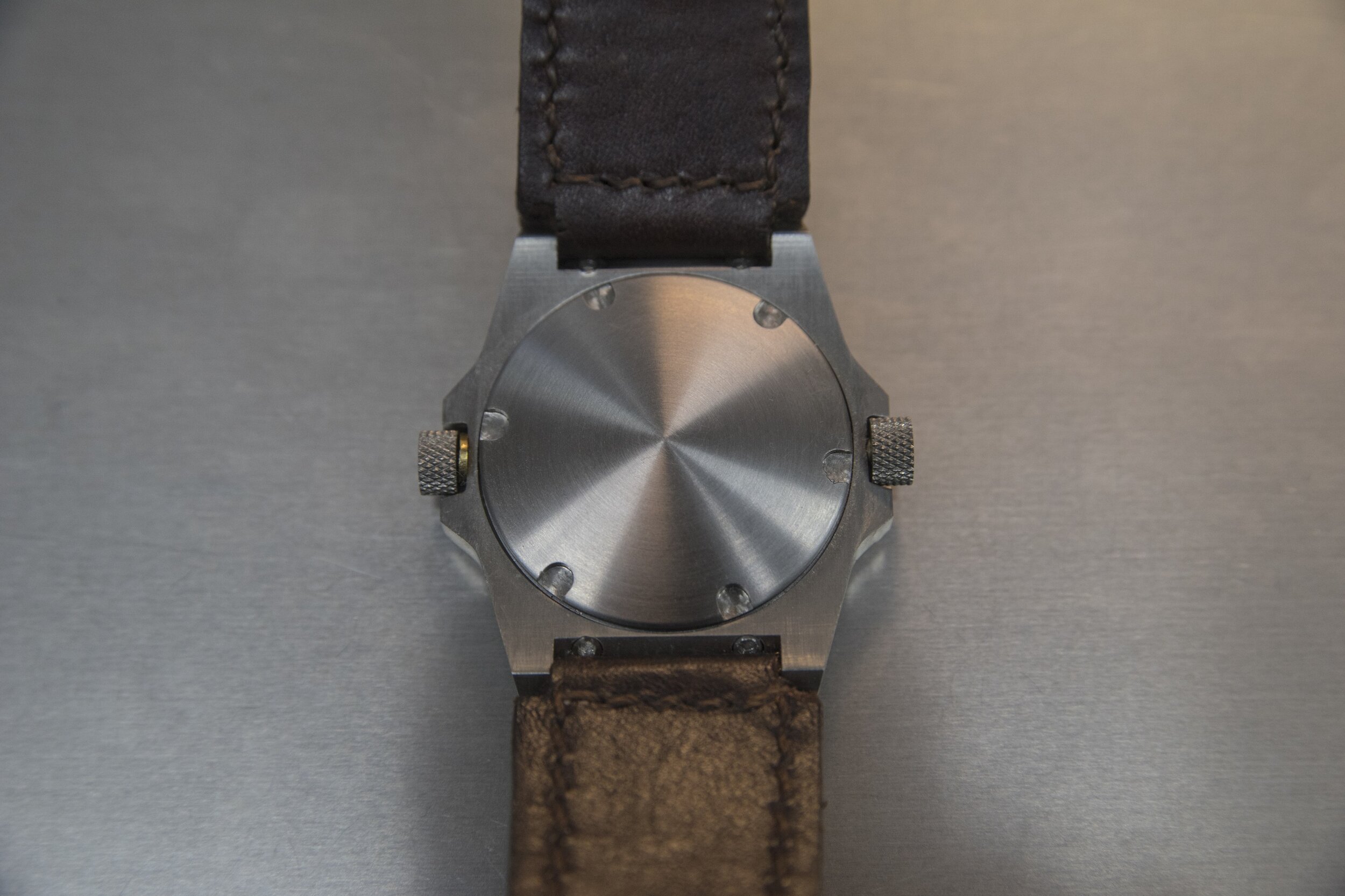 Image 2 of 9
Image 2 of 9

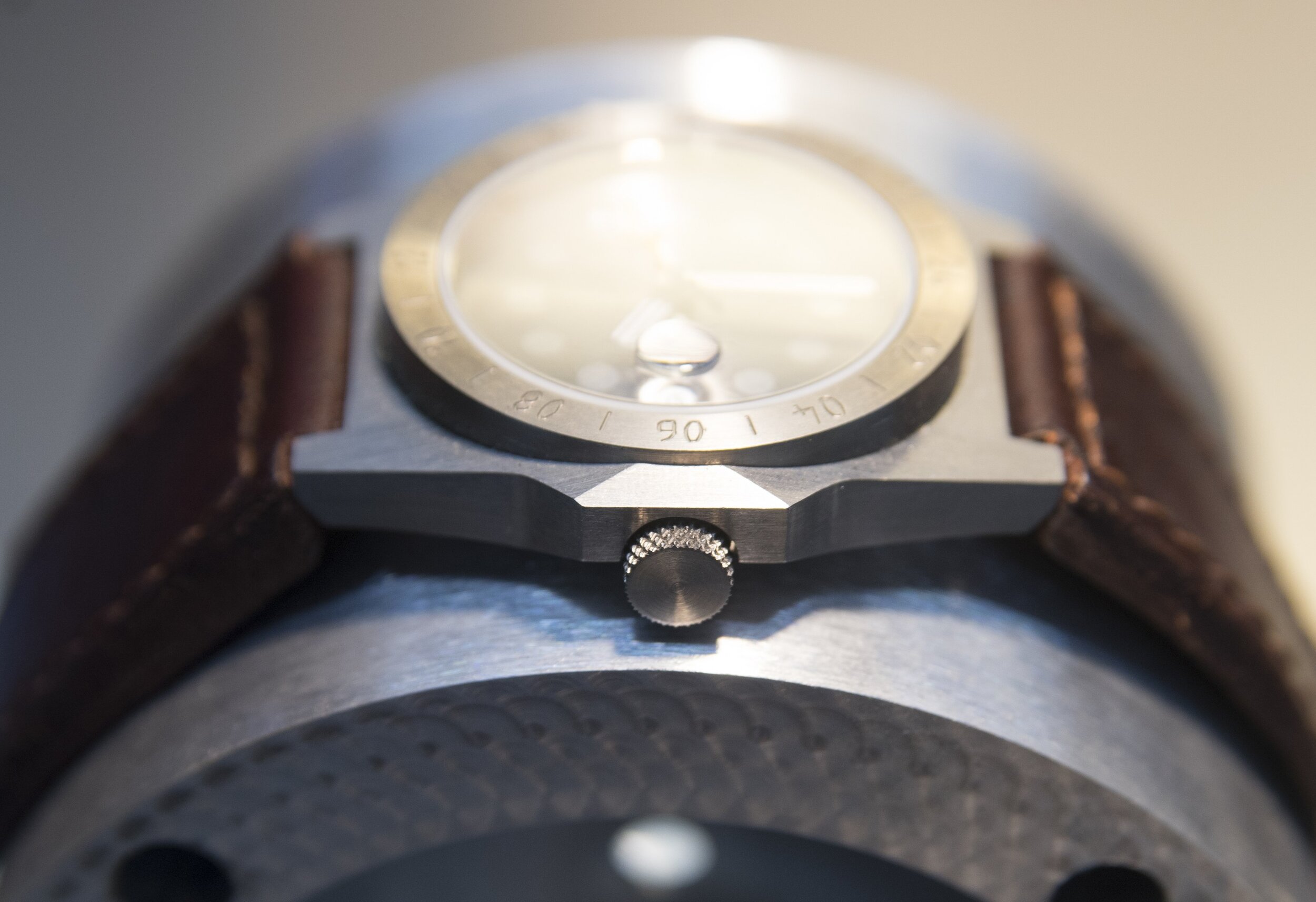 Image 3 of 9
Image 3 of 9

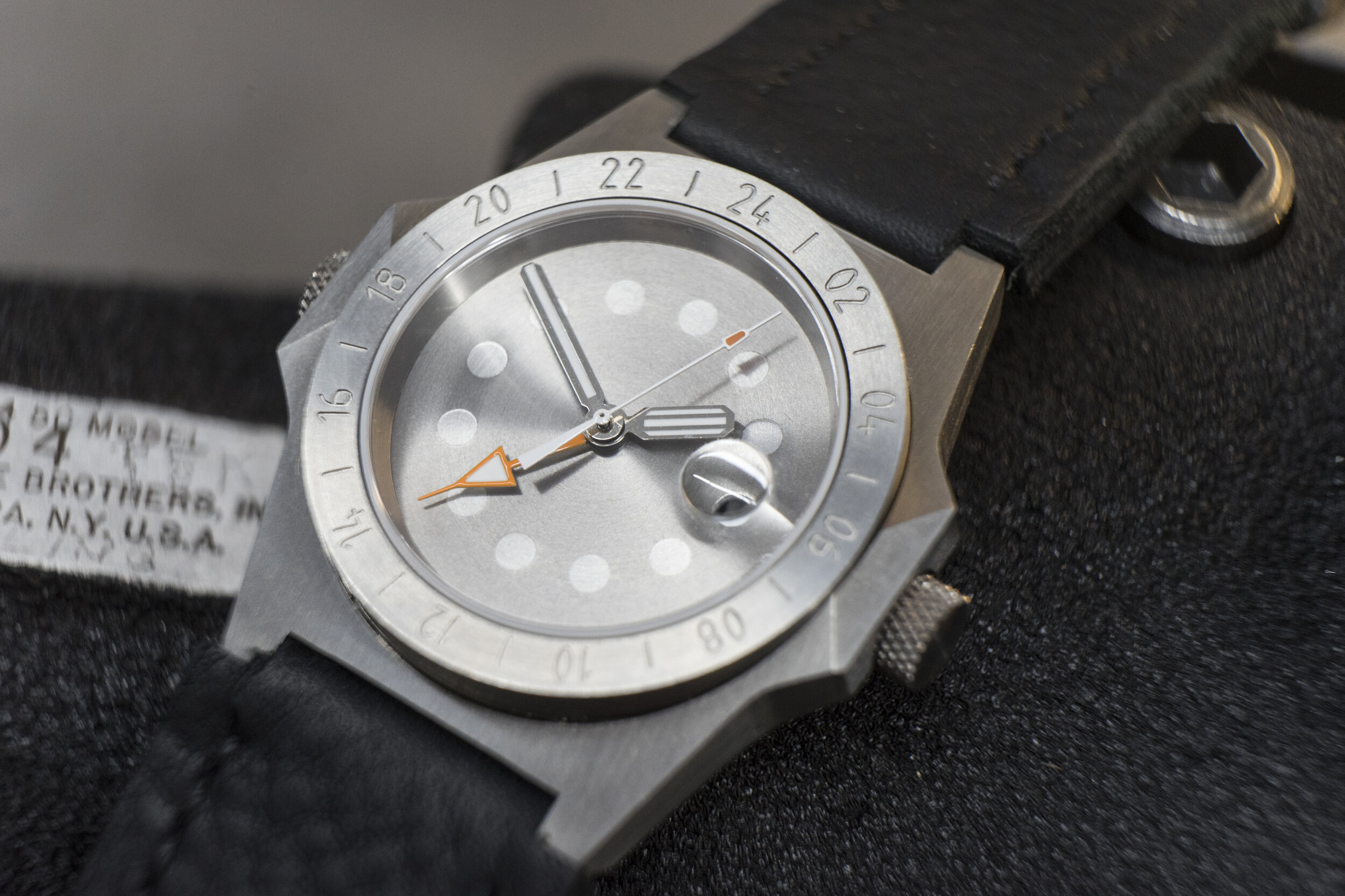 Image 4 of 9
Image 4 of 9

 Image 5 of 9
Image 5 of 9

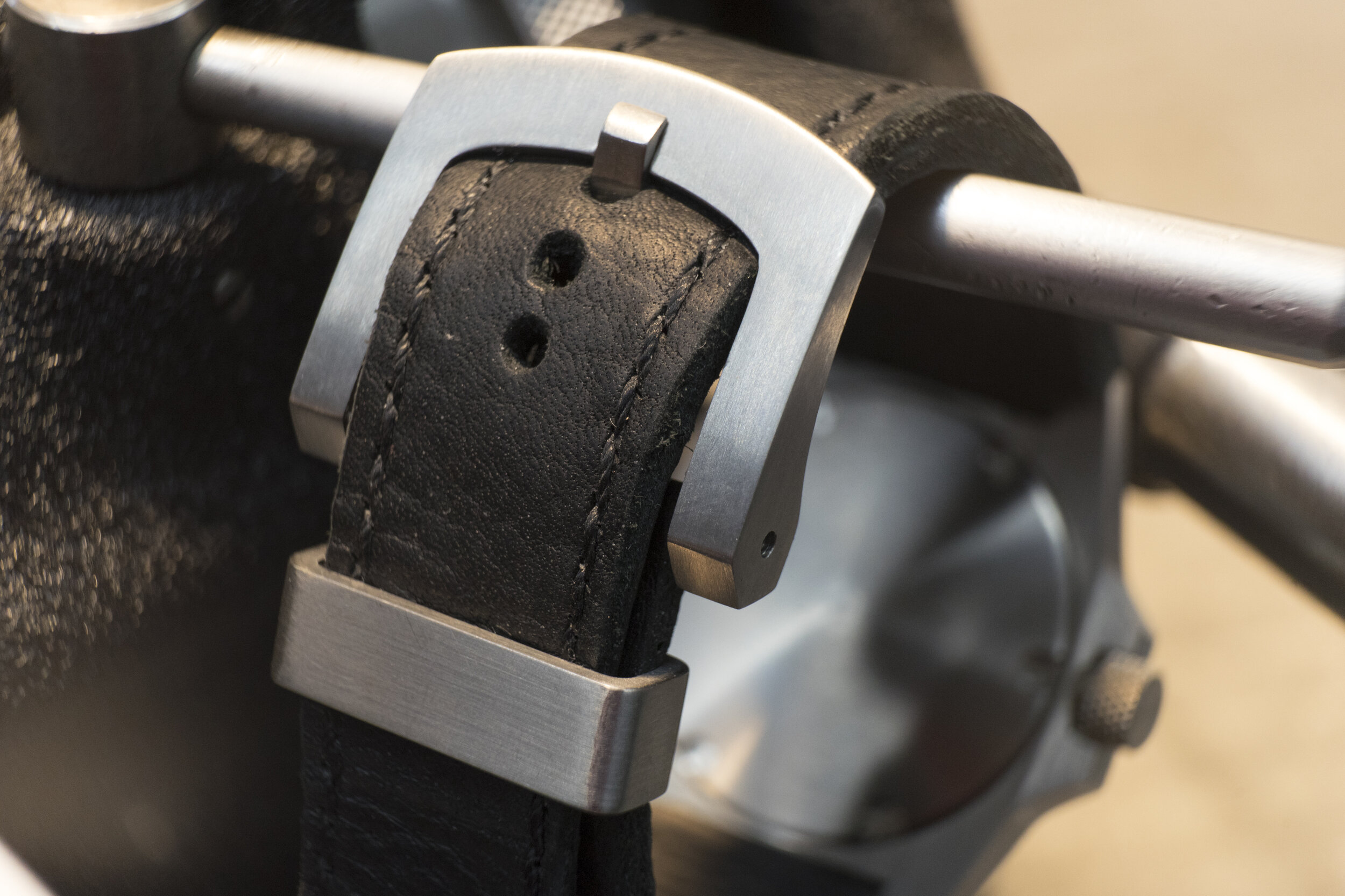 Image 6 of 9
Image 6 of 9

 Image 7 of 9
Image 7 of 9

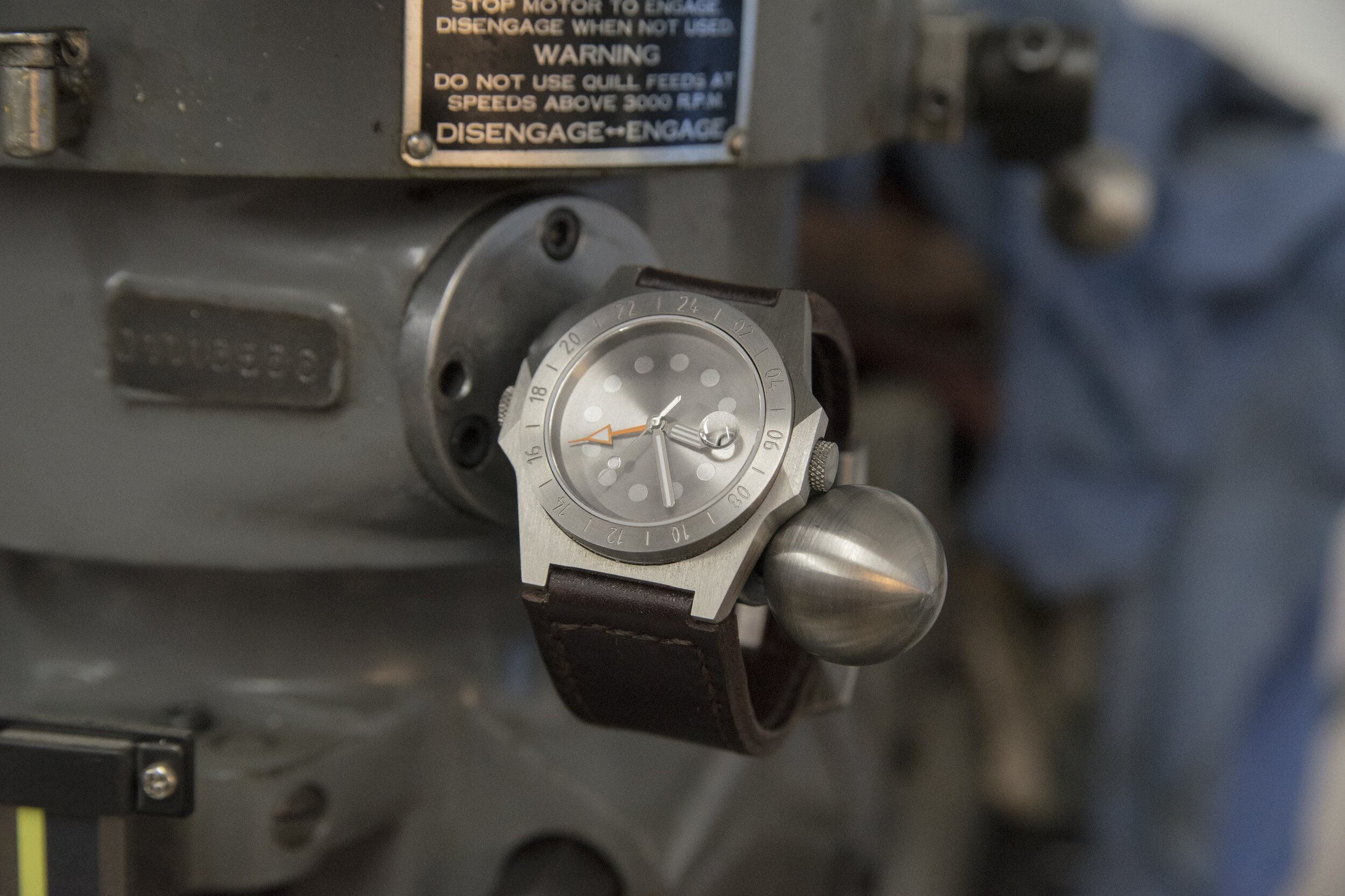 Image 8 of 9
Image 8 of 9

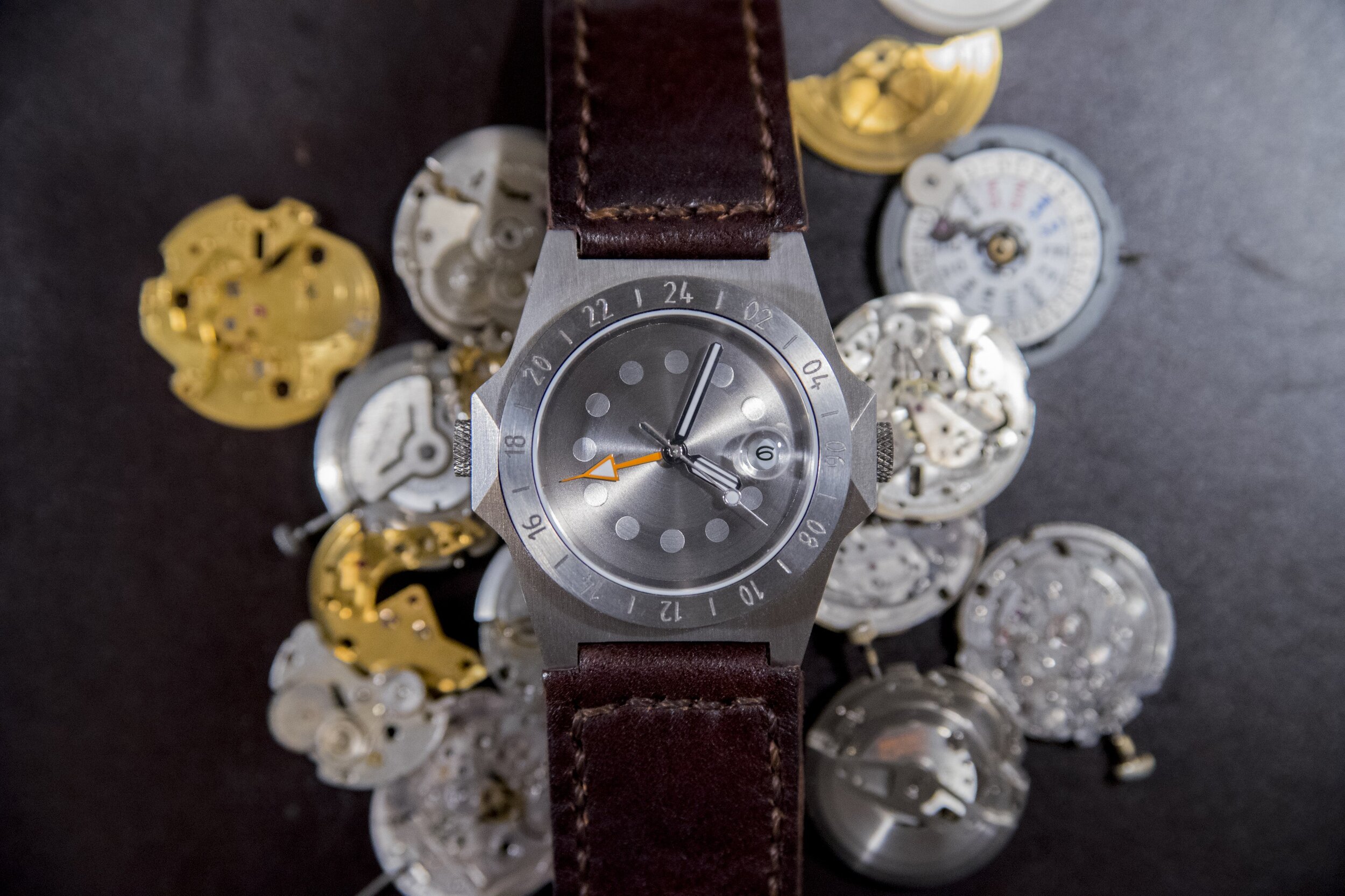 Image 9 of 9
Image 9 of 9










Machinist's GMT watch
When I decided to make a watch, I wanted it to reflect the tools that made it and the place it came from. Most of my machinery has come from the aerospace industry in the Seattle area, from retired machinists who've sold their tools. I have machinery that made parts for the Apollo program, 747s, and even local hydroplanes. All were used to make this watch. Additionally, the Titanium in this watch comes from the industry too: the buckle is made from waterjet excess from a jet door, and the bezel is made from a titanium jet hose fitting. The dial is made from leftovers of jet wing components. And the strap is made from local leather. The knob on the left side of the dial is connected to a friction lock on the bezel, so a second time zone can be set on the bezel. It's designed to be service friendly: the watch can be completely disassembled using a Allen wrench and a screwdriver.
When I decided to make a watch, I wanted it to reflect the tools that made it and the place it came from. Most of my machinery has come from the aerospace industry in the Seattle area, from retired machinists who've sold their tools. I have machinery that made parts for the Apollo program, 747s, and even local hydroplanes. All were used to make this watch. Additionally, the Titanium in this watch comes from the industry too: the buckle is made from waterjet excess from a jet door, and the bezel is made from a titanium jet hose fitting. The dial is made from leftovers of jet wing components. And the strap is made from local leather. The knob on the left side of the dial is connected to a friction lock on the bezel, so a second time zone can be set on the bezel. It's designed to be service friendly: the watch can be completely disassembled using a Allen wrench and a screwdriver.
When I decided to make a watch, I wanted it to reflect the tools that made it and the place it came from. Most of my machinery has come from the aerospace industry in the Seattle area, from retired machinists who've sold their tools. I have machinery that made parts for the Apollo program, 747s, and even local hydroplanes. All were used to make this watch. Additionally, the Titanium in this watch comes from the industry too: the buckle is made from waterjet excess from a jet door, and the bezel is made from a titanium jet hose fitting. The dial is made from leftovers of jet wing components. And the strap is made from local leather. The knob on the left side of the dial is connected to a friction lock on the bezel, so a second time zone can be set on the bezel. It's designed to be service friendly: the watch can be completely disassembled using a Allen wrench and a screwdriver.